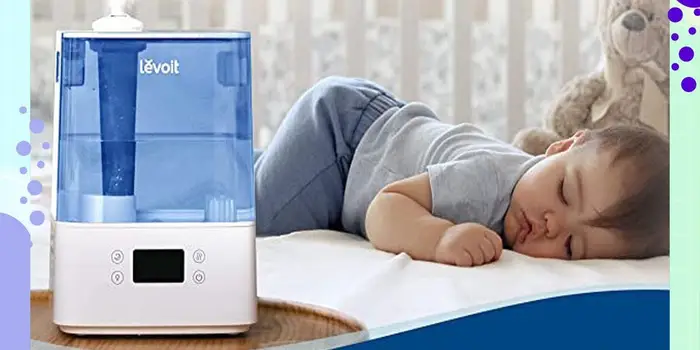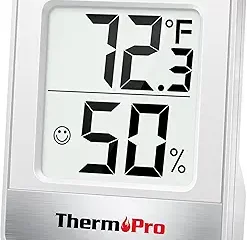Unboxing a brand-new humidifier feels like the start of a healthier, more comfortable life at home. But without knowing how to use it properly, you might not be getting all its benefits. I vividly remember the first time I brought one home. It was winter, and my skin was so dry it felt like I had sandpaper hands. My nose was constantly stuffy, and I wasn’t sleeping well. I thought, “This humidifier will change everything!” Spoiler alert: It did, but only after I learned how to use it right.
This guide is here to make sure you avoid any bumps along the way as you prepare to use your humidifier for the first time. From cleaning to setup, we’ll walk through everything step by step so you can enjoy a healthier, more comfortable living space right from the start.
Table of Contents
ToggleWhat are the basics of a humidifier?
What is a Humidifier and How Does It Work?
A humidifier adds moisture to the air, increasing humidity levels in a room. This can be especially beneficial during dry seasons or in climates where air conditioning is frequently used. There are several types of humidifiers, including cool mist, warm mist, ultrasonic, and evaporative models. Each works differently but ultimately serves the same purpose—adding moisture to the air to improve your comfort.
Benefits of Using a Humidifier
Humidifiers are known for offering various health and comfort benefits. By adding moisture to the air, they can help alleviate dry skin, irritated sinuses, and even reduce the risk of respiratory issues. Many people also find that they sleep better with a humidifier running, as it helps reduce dryness in the throat and nasal passages.
“Adding a humidifier to your home isn’t just about comfort—it’s about creating an environment where you can breathe easier and feel better.”
Do You Clean a Humidifier Before First Use?
Yes! Cleaning your humidifier before first use is essential, and it’s a step many new users overlook. Just like with any appliance, a bit of prep is required to ensure you’re starting with a clean slate.
Why Cleaning Before First Use is Important
Manufacturers often leave behind residue from the production process, and dust or particles can accumulate in the humidifier while it’s sitting in storage. Cleaning it out before you start ensures that the air you’re breathing is as clean and fresh as possible.
How to Clean Your Humidifier Before Using It for the First Time
Here’s a quick guide to cleaning your humidifier:
- Disassemble the humidifier according to the manufacturer’s instructions.
- Rinse the water tank with warm water and a mild soap or vinegar solution to remove any dust or residue.
- Wipe down the base and any other components with a clean, damp cloth.
- Reassemble the humidifier once everything is clean and dry.
I remember when I first opened my humidifier, I was so eager to use it that I almost skipped cleaning. Luckily, I did some quick research and learned that cleaning before use would make sure I wasn’t breathing in any leftover factory residue.
How to Use Your Humidifier for the First Time
Now that your humidifier is clean and ready to go, it’s time to dive into the actual setup process.
Filling the Water Tank
The first step is to fill the water tank. Always use distilled or demineralized water for optimal performance. Tap water contains minerals that can cause buildup inside the machine or produce white dust that may settle on furniture.
Make sure to avoid overfilling or underfilling the tank. Many humidifiers have a maximum fill line, so it’s best to keep an eye on that to avoid any mishaps.
Setting Up the Humidifier in the Right Location
Finding the right location for your humidifier is key. Place it on a flat, elevated surface, like a table or dresser. Make sure it’s not too close to walls, electronics, or fabrics to avoid moisture buildup or condensation.
I made the mistake of placing my humidifier too close to a window once, and I ended up with condensation on the glass every morning. Lesson learned: Keep it away from windows and electronics!
Adjusting the Humidity Settings
Most modern humidifiers allow you to adjust the humidity level. Ideally, the room humidity should be between 30% and 50%. Anything higher can lead to excess moisture, which may encourage mold growth, while anything lower won’t provide enough relief from dryness.
Check your humidifier’s manual for how to adjust the settings, and start with a moderate level. You can always increase or decrease it based on your comfort.
Turning the Humidifier On
After filling the tank and adjusting the settings, it’s time to turn your humidifier on. Most models will start producing mist within a few minutes. Be sure to monitor the mist output to ensure it’s at the right level for your room size.
What Happens When You Start Using a Humidifier?
Once your humidifier is up and running, you’ll begin to notice some changes in your environment almost immediately.
Immediate Benefits You May Notice
Within a few hours, you may feel the air in the room becoming cooler and fresher. Many people, myself included, notice relief from dry skin, throat irritation, and sinus congestion almost right away. In the first few nights of using my humidifier, I woke up feeling much more refreshed and less congested than usual.
Common Issues and How to Troubleshoot Them
As with any appliance, there are a few potential hiccups that can occur:
- White dust: If you notice white dust settling on surfaces, it’s likely due to minerals in the water. This is why distilled water is recommended.
- Noise: Some ultrasonic humidifiers can produce a faint buzzing sound. This is usually normal but can be reduced by adjusting the placement or settings.
Keeping Your Humidifier Clean and Efficient
A humidifier can provide lasting comfort, but it needs regular care and maintenance to function properly.
Daily and Weekly Cleaning Routine
Empty the water tank daily to prevent the growth of mold or bacteria. Every week, rinse the tank with a vinegar solution or mild soap to keep it clean and fresh. This small habit will go a long way in ensuring your humidifier’s longevity.
Deep Cleaning Once a Month
In addition to weekly cleanings, it’s a good idea to deep clean your humidifier at least once a month. Disassemble it and clean every component thoroughly, especially the water tank and any parts that come in contact with water.
Common Mistakes to Avoid When Using a Humidifier
It’s easy to make a few mistakes when you first start using a humidifier, but knowing what to avoid can save you some trouble in the long run.
Using Tap Water Instead of Distilled Water
Tap water can leave mineral deposits inside your humidifier, leading to scaling and the production of white dust. Using distilled or demineralized water is always the best option to avoid this issue.
Placing the Humidifier Too Close to Walls or Furniture
Moisture can build up on walls or furniture if the humidifier is placed too close. Keep it in an open area to ensure proper air circulation.
Ignoring Regular Cleaning
Not cleaning your humidifier regularly can lead to mold and bacteria growth, which can be harmful to your health. Keeping up with regular maintenance is crucial to ensuring your humidifier stays effective and safe to use.
Enjoying the Benefits of Your Humidifier
With your humidifier properly set up and maintained, you’re now ready to enjoy a healthier, more comfortable living space. Whether it’s dry skin, stuffy sinuses, or a better night’s sleep, the benefits are immediate and tangible.
Looking back, my first experience with a humidifier was a game-changer. I didn’t realize how much of a difference it could make in my daily comfort until I tried it. If you’re just starting out, take the time to set it up correctly, and you’ll notice the positive effects before long.
“Using a humidifier for the first time is like turning the volume up on your comfort levels—once you experience it, you’ll wonder how you lived without it.”
- The Best Humidity Level for Tropical Plants: A Complete Guide for Thriving Greens - November 21, 2024
- Can the Roomba Combo i5+ Function as Both a Vacuum and a Mop? - November 16, 2024
- Thermopro tp49 Digital Hygrometer Review: Comparing Top Competitors - November 7, 2024

